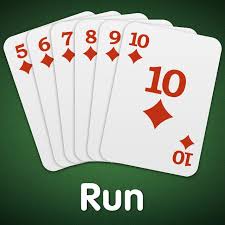Rummy Order Of Cards, Rummy is a classic card game that blends skill, strategy, and a bit of luck. At the core of rummy gameplay is the concept of organizing cards into sets and sequences. Understanding the order of cards and their roles is crucial for mastering the game and improving your chances of winning. This article explores the fundamental aspects of the order of cards in rummy, including card values, suits, and how to use them effectively in gameplay.
Card Values and Suits
In rummy, the deck typically consists of 52 cards divided into four suits: Hearts, Diamonds, Clubs, and Spades. Each suit contains 13 ranks: Ace, 2, 3, 4, 5, 6, 7, 8, 9, 10, Jack, Queen, and King. The value of the cards plays a crucial role in forming valid sets and sequences:
- Ace: Can be used as either the lowest card (below 2) or the highest card (above King) in sequences, depending on the game rules. In most rummy variations, Ace is valued at 1 in sets and sequences, but it can also act as the highest card in sequences like A-2-3.
- Number Cards (2-10): Have their face value, which is used to form sequences and sets.
- Face Cards (Jack, Queen, King): Each has a value of 10 points in most rummy games. They are used primarily to form sets or sequences, and their value impacts scoring.
Forming Sets and Sequences
In rummy, cards are arranged into two main types of groups: sets and sequences.
1. Sets
- Definition: A set is a group of three or four cards of the same rank but different suits.
- Example: 7♠, 7♦, 7♥ (a valid set of 7s in different suits).
2. Sequences
- Definition: A sequence (or run) is a group of three or more consecutive cards of the same suit.
- Example: 4♣, 5♣, 6♣ (a valid sequence in the Clubs suit).
Order of Cards in Sequences
In sequences, the order of cards is crucial for forming valid runs:
- Consecutive Order: Cards must be in consecutive order within the same suit. For example, 5♦, 6♦, 7♦ forms a valid sequence.
- Aces: Can be used to form sequences in two ways:
- Low Sequences: A-2-3 (Ace as the lowest card).
- High Sequences: Q-K-A (Ace as the highest card).
Strategic Use of Card Order
Understanding and strategically using the order of cards is key to success in rummy:
1. Building Sets and Sequences Early
- Early Formation: Aim to form sets and sequences as early as possible to simplify your hand and reduce the risk of accumulating high points.
- Card Prioritization: Focus on forming sequences with consecutive cards of the same suit, as sequences often offer more flexibility in gameplay compared to sets.
2. Managing Wild Cards
- Wild Cards: In many rummy variations, wild cards (e.g., jokers) can substitute any card to form sets or sequences. Utilize them strategically to complete difficult combinations.
3. Discarding Unnecessary Cards
- Efficient Discards: Discard high-point cards or cards that do not fit into your current sets or sequences. This minimizes the points you can potentially lose if another player declares.
4. Observing Opponents
- Track Discards: Pay attention to the cards your opponents are discarding and picking up. This information can give you insights into their strategies and help you avoid discarding cards that might benefit them.
Tips for Mastering Card Order in Rummy
1. Understand Game Variants
- Different Rules: Familiarize yourself with the specific rules of the rummy variant you’re playing, as different versions may have unique rules regarding card order and usage.
2. Practice and Patience
- Regular Practice: Regular practice helps in better understanding the order and arrangement of cards, improving your ability to form sets and sequences quickly.
3. Adapt Strategies
- Flexible Approach: Adapt your strategy based on the cards you are dealt and the moves of your opponents. Be prepared to change your approach as the game progresses.
Conclusion
The order of cards in rummy is fundamental to forming valid sets and sequences, which are crucial for winning the game. By understanding card values, suits, and strategic use of card order, players can enhance their gameplay and improve their chances of success. Whether you’re playing a casual game or participating in a competitive tournament, mastering the order of cards and effectively using them in your strategy is key to excelling in rummy.




